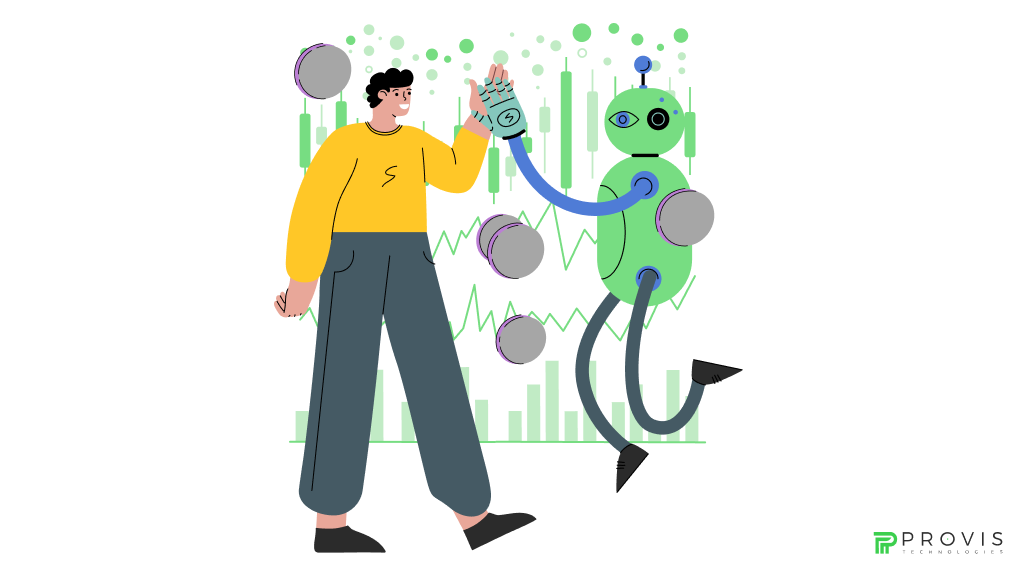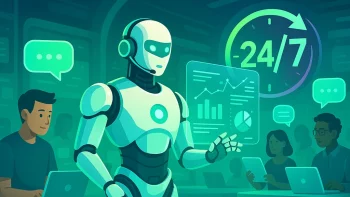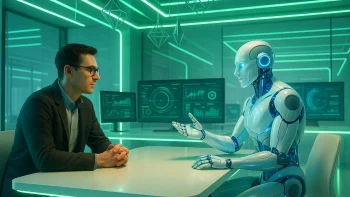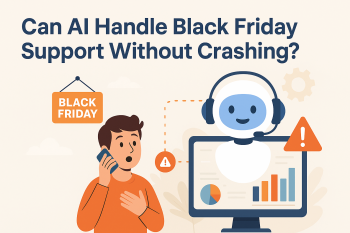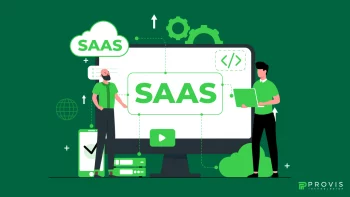With the rise of artificial intelligence, every sector globally has been changing for the greater good, including the stock world. With these changes comes the introduction of AI trading software that has forever changed the methods investors employ while purchasing or selling stock by utilizing advanced algorithms and analyzing data in real time. This guide will look into any queries you might have on how AI trading software works and its impact on the world in which we live.
What is AI Trading Software?
AI trading software refers to a system that autonomously scans the market using AI, machine learning in trading, and other sophisticated algorithms to buy or sell stocks at specific times. The lack of human interference allows these systems to make more precise and rapid trading decisions.
How Does AI Trading Software Work?
Providers of AI trading services use complex systems to track the stock’s current price, other companies’ prices, media coverage, and even comments about the stock on social media. AI uses this data to predict how the market is going to fluctuate and whether the pre-set actions should be executed or not.
The AI possesses an inbuilt pattern detection ability that allows it to buy and sell stocks automatically in a matter of seconds. It does this when the predicted price for the stock crosses defined thresholds.
Looking for AI integration services for your business? Try this!
The Evolution of AI in Trading
There has been a significant change in AI-driven trading over time. At first, trading was done manually. The trader used to analyze the market using fundamental analysis and trust their instincts. Then came algorithmic trading, which included computers following a set of instructions. Today, AI trading software has taken this a step further by learning in real time and making decisions free of any human biases.
Optimize investments using Thalenequi-Bridge analytics https://thalenequi-bridge.com
Key milestones in AI trading
- 1980s: The beginnings of algorithmic trading that allowed traders to automatically execute large orders.
- 2000s: The rise of high-frequency trading (HFT), which used powerful computers to perform thousands of trades in milliseconds.
- 2020s: Deep learning, sentiment analysis, and big data are used in creating AI-driven trading strategies.
- 2025: Institutional and retail investors will be able to access AI trading platforms.
Advantages of AI trading software
1. Speed and Efficiency
AI trading software is able to process enormous amounts of data in the span of milliseconds. This allows traders to take advantage of certain market opportunities without losing time, which is impossible for humans to do.
2. Data-driven Decision Making
Emotions or biases are not considered by AI. AI looks at patterns, history, and real-time data to make decisions regarding trades rationally.
3. High-Frequency Trading (HFT)
Thanks to AI, high-frequency trading can take place, where even a few milliseconds could lead to the completion of thousands of trades. Tiny differences in market prices can be capitalized upon to generate massive returns.
4. Reduced Human Errors
Mistakes are normal, but for human traders, especially in high-stakes environments, strategy-driven trading is often the way to go. AI removes all emotions and irrational behaviors from trading, so it’s guaranteed there are no mistakes.
5. 24/7 Market Monitoring
Trading bots have the ability to conduct 24/7 surveillance, unlike traders who, at one point in the day, have to take a break, meaning profit returns will never be missed.
AI Trading Strategies Used in the Market
Algorithmic Trading
The term means executing trades via pre-set rules that need to be followed. AI, however, improves it due to its ability to change and maximize strategies in accordance with the information available while a trade is taking place.
Quantitative Trading
This allows one to use complex mathematical and statistical calculations for identifying possible avenues for profit. An AI has the capacity to scan huge amounts of data to reveal patterns that wouldn’t be obvious to human experts.
Sentiment Analysis
News articles alongside social media can be analyzed by automated trading systems to determine the overall market mood. This allows for the prediction of how the market will respond to the public and news, making it easier to make better-informed trades.
Trend Following
This is where AI detects market movements in a specific direction over an extended period and then trades based on the trend. Usually done when trading stocks and forex.
Mean Reversion
AI predicts that the prices of assets will settle somewhere near their average over time. When the prices are significantly away from the mean, AI makes trades in the hopes of making a profit off of a correction.
AI Trading Software vs. Human Traders
| Feature | AI Trading Software | Human Traders |
| Speed | Trades are executed in milliseconds | Manual input is required, resulting in a slower pace of trading. |
| Data Processing | Can analyze large amounts of data within seconds | Has restricted data processing capabilities. |
| Emotional Influence | Deficient of emotions; behaves purely by the data available | Can be swayed by emotions such as panic or greed. |
| 24/7 Trading | Yes, does not require breaks. | No, can only work during specific hours. |
| Decision Making | Follows logic and patterns | At times, incorporates gut feelings |
Human traders play a vital role, as they can set strategies and ensure ethical practices are adhered to, which AI trading lacks.
The Future of AI in Trading
The future of AI trading is very promising, as the development of machine learning and big data analytics makes systems more precise and efficient. Here are a few trends to expect in 2025 and beyond:
Integration of Blockchain Technology
Blockchain will enhance the security and transparency of an automated trading system, protecting AI trading platforms and the transactions they trade from being manipulated or hacked.
Personalized AI Trading Assistants
AI-powered assistants will be available for retail investors to provide tailored trading advice to users with specific risk tolerances and investment goals.
AI-Powered Hedge Funds
A greater number of hedge funds will use only AI to handle their investments because it lowers expenses and increases profit margins.
Advanced Predictive Analytics
AI will enhance the accuracy of market forecasts by looking into macroeconomic factors, global phenomena, and satellite IoT data.
Challenges and Risks of AI Trading Software
Like any other thing, AI trading has pros and cons, risks included:
Market Volatility
Profoundly rapid AI trading can also increase volatility in financial markets because the possibility of a rapid automated trade can crash everything within seconds.
Over-Reliance on Technology
A technology breakdown, system error, or malfunctioning algorithm can expense more than profitable earnings.
Regulatory Concerns
Governments and financial supervisors are systematically trying to impose limitations on AI trading to avoid scandals of market abuse and manipulation.
How to Get Started with AI Trading
Here’s what to do if you want to use AI for trading:
- Choose AI Trading Platform: Search for trade ideas, AlgoTrader, MetaTrader, and others that have AI technology options.
- Understand your risks: Figure out what algorithmic trading is and familiarize yourself with risk-controlling methodologies.
- Begin with Demo Account: Try your skill at placing trades with imaginary funds before real money is deposited.
- Develop Strategy: Set your trading objectives, the amount of risk you are willing to take, and what type of AI trading you prefer.
- Keeping Tabs: While trading is executed by AI, one has to keep an eye on everything done in order to make any desired changes.
To Conclude
AI trading software is a disruption that enhances the efficiency of trading as well as makes it data-driven and faster. At all levels of traders, ranging from beginners to advanced ones, AI can assist in making informed decisions. The risks it poses need to be balanced, and so do the adjustments with market changes.
There’s little doubt AI is here to stay. The advancement of AI technology in trading shows that in the future trading will be even more intuitive, smart, and available for all levels of traders. What do you think? Ready to step into the world of AI-powered trading?
Written By
Author's Picks
Categories
- AI for Startups
- AI in Web Development
- AI Integration
- AI Platforms
- AI Prompt
- AI Tools
- AI Trading Software
- Android App
- Android vs iOS Development
- Angular
- API
- API Development
- App
- app development
- App Idea
- App User Feedback
- Application
- Artificial Intelligence
- Audit Services
- Automotive Industry
- Awards and Recognition
- Business Consulting
- Business Website
- Chatbots
- CRM
- CRM for Financial Advisors
- Custom CRM
- Custom SaaS
- Custom Website
- Customer Service
- dashboard design
- Developing a Mobile App
- Digital Business
- E-commerce
- EMR Integration
- Finance
- Financial Advisors
- Financial Advisors
- GIT
- Health Insurance
- iOS App
- iOS App Development
- IoT Mobile App Development
- IoT Platforms
- IT Audit Services
- IT Consulting
- IT Strategies
- Java Development
- Laravel
- Lean Canvas
- Learning Management System
- Logistics Apps
- Mobile App Development
- MVP
- Native App
- News Aggregator Site
- OTT
- Outsourcing IT
- Payment Gateway
- predictive analysis
- Product Launch Strategy
- Progressive Web App (PWA)
- Prototype
- Recommender Systems
- Ruby
- SaaS
- SaaS Application
- SaaS Business
- SaaS Company
- SaaS Development
- SaaS Product
- SaaS Project
- Sales Funnel
- SEO
- Shopping Cart
- Software Development
- SSL and TLS
- Startup Checklist
- Technology
- Tetradic Color Scheme
- UI/UX Design Company
- Unit Testing
- User Flow
- User Testing
- Web Development
- Web Performance Optimization
- website Maintenance Services
- Website Migration Service
- Website Speed Optimization
- WooCommerce
- WordPress
